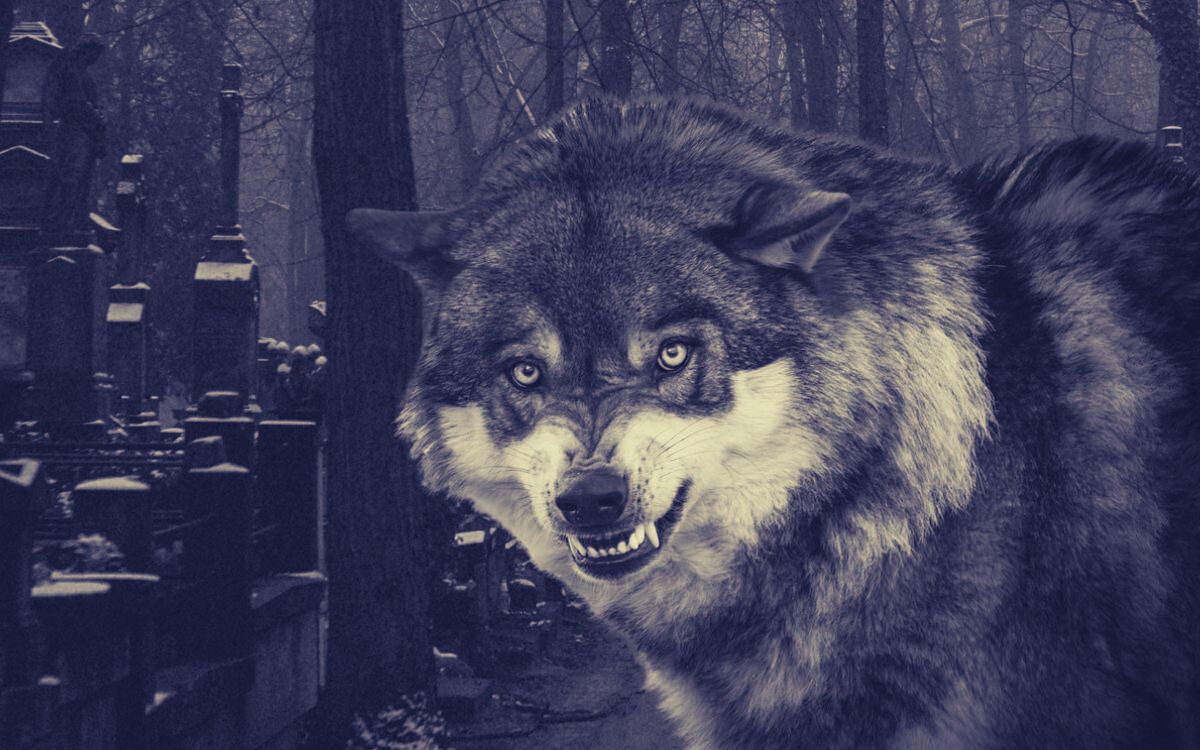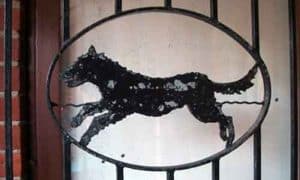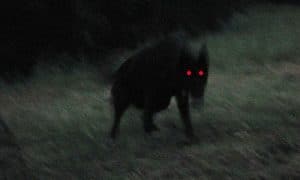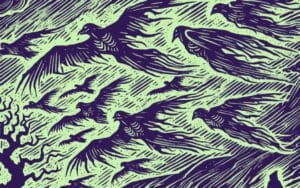Black Dogs, or Church Grims, in graveyards may be a protector, or force for good, rather an evil spirit, says HELEN JR BRUCE
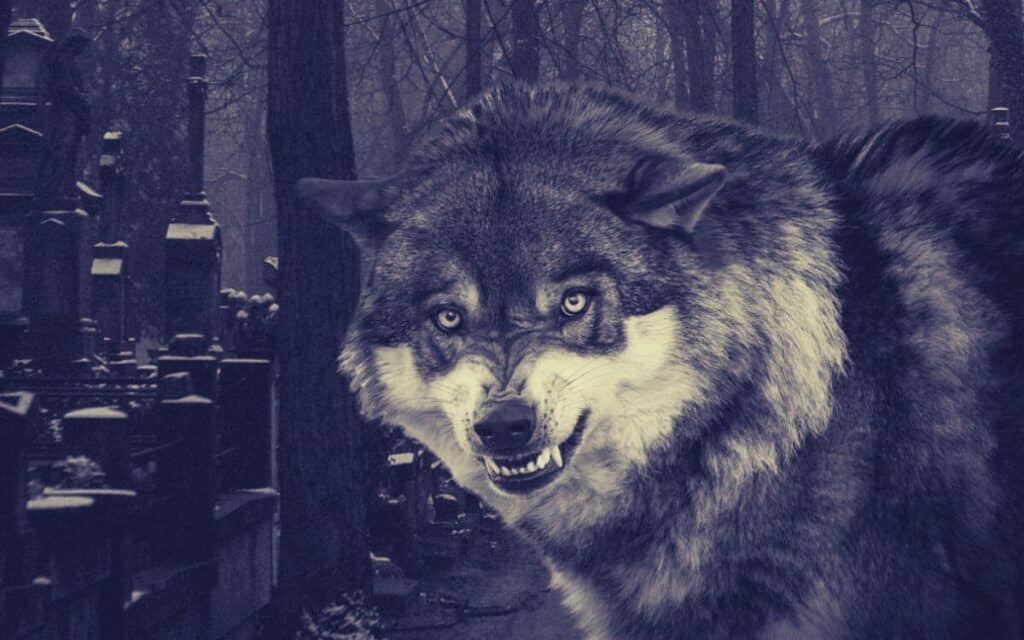
The Grim has made its way into popular culture through featuring in JK Rowling’s novel ‘Harry Potter and the Prisoner of Azkaban‘, where it is described as an omen of death. But has the appearance of a Black Dog always been a bad sign, and where did it appear in folklore before it was chosen as the animagus form of Sirius Black?
Sirius itself is the dog star, and part of the constellation of Canis Major. The fact that a great dog has been mapped out in the sky illustrates just how strong the connection between humans and dogs has been throughout history. There is some division among scientists as to the exact timing, but it is likely that early domesticated dogs first appeared in Europe around 15,000 years ago, so it should come as no surprise that there is a wealth of folk tales and superstitions about canines.
Black Dog Apparitions
One of the most enduring stories is that of the Grim. Consistent reports over the centuries speak of apparitions of Black Dogs in graveyards or on roads that run by them. Some people describe the animal as terrifying, horribly large and with burning eyes, while others have believed the dog to be a flesh and blood animal until it mysteriously disappears. Others still have felt that the Black Dog is some kind of protector, or even the spirit of a dead loved one returning in animal form.
Historically, the concept of the Church Grim can be traced back to the traditional, if rather macabre, practice of foundation sacrifices. This practice, called immurement, persisted into the sixteenth century, and perhaps even further. It was a ritual activity where a sacrifice, very often a dog, was buried alive in either the foundations or walls of a building. It was believed that the spirit of the animal would then go on to act as a guardian of the area, and what better protector than a faithful hound?
Canine Burials
The Medieval cemetery at Kirk Ness in North Berwick and Leiston Abbey in Suffolk have both had dog skeletons excavated in their grounds. There was some excitement over the discovery in Leiston Abbey, as the skeleton was unusually large, and some even speculated whether the bones could be those of the infamous Black Shuck himself. The reality is that these burials are more likely to relate to a variation on the foundation sacrifice tradition, where the body of a black hound was buried in the Northern part of a new churchyard.
Just as a dog walled up within a newly built church or abbey was believed to remain as a spiritual protector of the building, the Black Dog buried in the churchyard was thought to remain attached to the sacred ground and become the Church Grim. Part of the role may indeed include scaring away any who entered the graveyard with ill intent, but the most important duty of the Grim was to protect the souls of those buried there from the Devil.
Dogs as Psychopomps
It was said that the first burial in any churchyard would be burdened with this task, therefore a dog was interred there to stop the job falling to a human. Although this feels cruel, and undoubtedly is, our ancestors would have been well aware of the belief in canines as psychopomps or ‘soul guides’. Consider Anubis from Egyptian culture, the hounds of Annwn from Welsh myth and the Aztec dog-headed god Xolotl.
So is the Grim truly an omen of death? An examination of earlier folklore references would suggest perhaps not, although it is closely associated with the dead and places of burial. Rather than being a ghoulish apparition, the original purpose of the Church Grim was to protect the souls of the departed, or even help guide them to the afterlife. So if the apparition of a Black Dog frightens you in a churchyard, perhaps it is you who should examine your intentions while you’re there.
HELEN JR BRUCE is a folklorist and author who is particularly fascinated with Black Dog folklore and the Wild Hunt. She writes regularly for a range of magazines and journals and the first two books in her fantasy folklore ‘Heat of the Hunt’ trilogy are available now.
- Facebook: facebook.com/heatofthehunt
- Facebook Groups: Dark Fae, Black Dogs and Wild Hunters
- Twitter: @HelenJRBruce1
- Instagram: author_helenjrbruce

